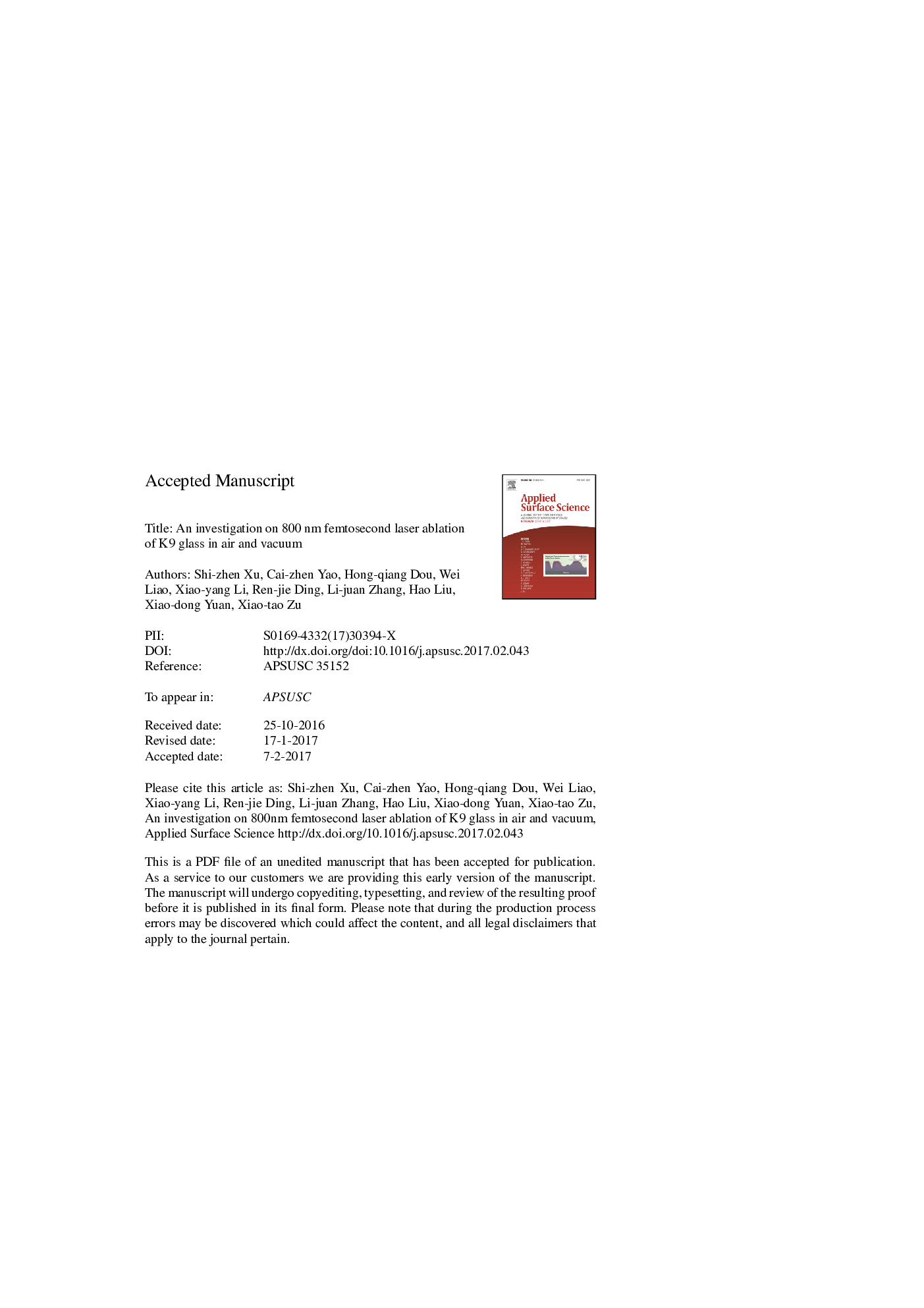| Article ID | Journal | Published Year | Pages | File Type |
|---|---|---|---|---|
| 5351768 | Applied Surface Science | 2017 | 21 Pages |
Abstract
Ablation rates of K9 glass were studied as a function of femtosecond laser fluences. The central wavelength was 800Â nm, and pulse durations of 35Â fs and 500Â fs in air and vacuum were employed. Ablation thresholds of 0.42Â J/cm2 and 2.1Â J/cm2 were obtained at 35Â fs and 500Â fs, respectively, which were independent with the ambient conditions and depend on the incident pulse numbers due to incubation effects. The ablation rate of 35Â fs pulse laser increased with the increasing of laser fluence in vacuum, while in air condition, it slowly increased to a plateau at high fluence. The ablation rate of 500Â fs pulse laser showed an increase at low fluence and a slow drop of ablation rate was observed at high fluence in air and vacuum, which may due to the strong defocusing effects associated with the non-equilibrium ionization of air, and/or the shielding effects of conduction band electrons (CBEs) produced by multi-photon ionization and impact ionization in K9 glass surface. The typical ablation morphologies, e.g. smooth zone and laser-induced periodic surface structures (LIPSS) were also presented and illustrated.
Keywords
Related Topics
Physical Sciences and Engineering
Chemistry
Physical and Theoretical Chemistry
Authors
Shi-zhen Xu, Cai-zhen Yao, Hong-qiang Dou, Wei Liao, Xiao-yang Li, Ren-jie Ding, Li-juan Zhang, Hao Liu, Xiao-dong Yuan, Xiao-tao Zu,
